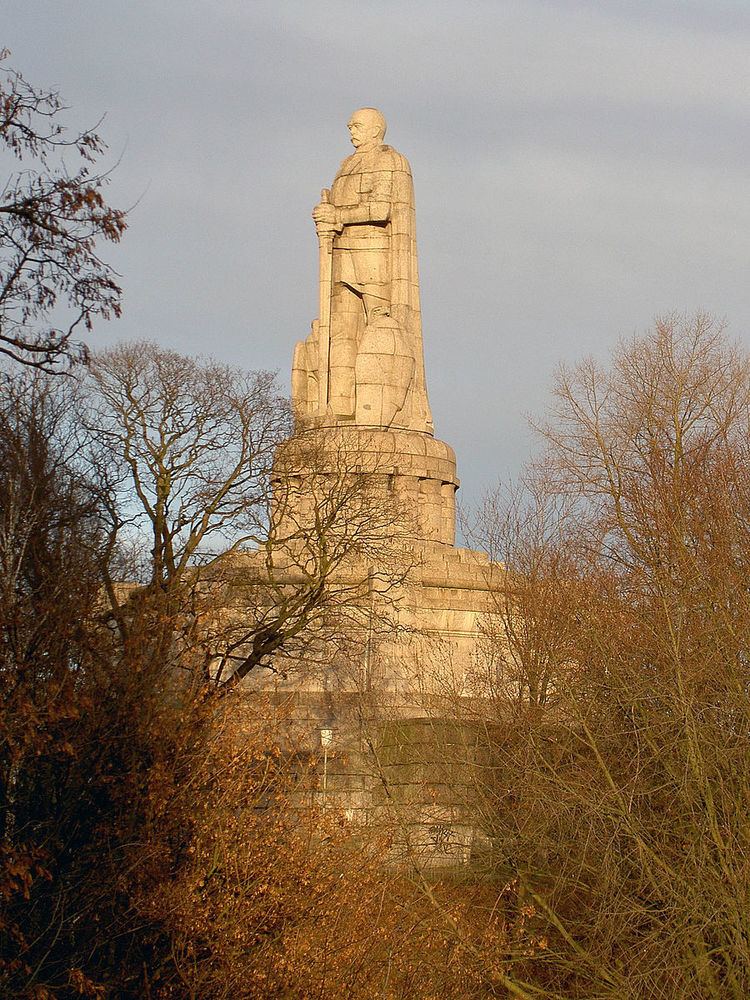Opening date 2 June 1906 | Height 35 m (115 ft) Opened 2 June 1906 | |
 | ||
Address Alter Elbpark, Seewartenstraße, 20459 Hamburg, Germany Hours Open today · Open 24 hoursThursdayOpen 24 hoursFridayOpen 24 hoursSaturdayOpen 24 hoursSundayOpen 24 hoursMondayOpen 24 hoursTuesdayOpen 24 hoursWednesdayOpen 24 hours Similar Afrikahaus, Alter Elb Park, Chilehaus, St Peter's Church - Hamburg, St Catherine's Church | ||
The Bismarck Monument (German: Bismarck-Denkmal) in Hamburg is a memorial sculpture located in the St. Pauli quarter dedicated to Otto von Bismarck. It is one of 250 memorials to Bismarck worldwide and is the largest and probably best-known of these Bismarck towers. The monument stands near the jetties of Hamburg port on the Elbhöhe, today a local recreation area. The architect was Johann Emil Schaudt; the sculptor was Hugo Lederer.
Contents
History
The site of the monument was previously occupied by the Elbpavillon restaurant which was removed in 1901. Mayor Johann Georg Mönckeberg established a citizens' commission to erect the monument at the site.
The Bismarck Monument cost 500,000 Goldmarks, and construction finished in 1906.
Architecture
The monument is approximately 35 m (115 ft) high, weighs 600 t (590 long tons; 660 short tons), and is the world's largest Bismarck monument.
The base of the monument houses a complex painting showing the Black Sun image in Wewelsburg with a central piece incorporating a sunwheel and swastikas and the text "Great questions will not be resolved by talk, but by iron and blood" (Ger: "Nicht durch Reden werden große Fragen entschieden, sondern durch Eisen und Blut"). The origin of this painting is unknown.
Designers created a large network of catacombs beneath the monument. During the years 1939 to 1940, they became an air-raid shelter offering protection for up to 650 people. The architect's intent for the catacombs remain unknown however they, and the entire monument interior, are no longer accessible for safety reasons. During the 1970s, a soldier who served with the British army during the occupation in Germany discovered a tunnel beneath the Bismarck memorial while in Hamburg which led to a Nazi hideout. He contacted the Daily Mirror newspaper and they contacted the Burgermeister in Hamburg. After viewing the tunnel as the soldier had just described it, the tunnel was sealed.
